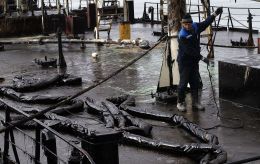EU explores alternative reparations loan for Ukraine - Le Monde
 EU ready to allocate €90 billion to Ukraine by 2027 (Photo: Getty Images)
EU ready to allocate €90 billion to Ukraine by 2027 (Photo: Getty Images)
The EU is considering providing aid to Ukraine through its own resources instead of offering a reparations loan from frozen Russian assets, according to Le Monde.
Specifically, this would involve borrowing up to €90 billion from EU member states, as outlined in a European Commission note proposing an alternative support plan for Kyiv. Using frozen Russian assets for a reparations loan could have posed risks for Belgium, where most Russian assets are held at the Belgian financial institution Euroclear, due to potential lawsuits from Moscow.
Initially, the European Commission developed a mechanism - a reparations loan - that would have used frozen Russian assets to provide Kyiv with a €140 billion loan. However, it failed to secure sufficient guarantees for Euroclear. The Commission also did not consult Belgium in advance, even though the country could have faced legal consequences from Russia.
As a result, last month, Belgian Prime Minister Bart De Wever categorically refused to participate in a scheme that could prove extremely costly for Brussels.
“The Commission took a technocratic, apolitical approach and showed no sense of urgency,” said Nathalie Loiseau, a member of the European Parliament.
European Commission shifts stance on reparations loan
Since then, European Commission President Ursula von der Leyen has sought to clarify the debate, although until recently she continued to insist that a reparations loan was the only solution. After a final meeting with De Wever on November 14, she published a note on November 17 presenting several options.
In the note, she acknowledged that a reparations loan would require joint efforts by the Union and possibly international partners to counter such perceptions (of confiscating Russian assets), which could undermine Euroclear’s business model and destabilize the euro, as many authoritarian regimes confidently place their funds there.
The note presented an alternative: borrowing on behalf of the 27 member states to support Kyiv. The main drawback for member states would be the need to guarantee the loan, increasing their own debt. However, the Commission now asserts that the EU budget could cover this burden up to €90 billion. For the remaining funds - Kyiv’s needs are estimated at €135 billion by the end of 2027 - bilateral assistance could be expected.
“We have to weigh, on the one hand, the predictable cost of this joint borrowing, between €2 and €3 billion per year, and on the other, the unpredictable risk linked to the reparation loan,” summarized a European diplomat.
EU member states’ stance on the new approach
The Baltic countries, the Nordic nations, and Poland support a reparations loan, viewing it as fair for Russia to pay for the damage it has caused Ukraine. Berlin also backs this approach; German Chancellor Friedrich Merz endorsed the Commission’s plan - hastily and without prior notice - in the Financial Times on September 25.
Other member states, including France, do not want to rule out the possibility of joint borrowing. However, they are aware that Hungarian Prime Minister Viktor Orbán, currently in the midst of an election campaign, could veto the plan, as he has stated he no longer wishes to support Kyiv. Orbán has also emphasized his connections with both the White House and the Kremlin.
“In any case, Europeans will need to show determination to keep control of the Russian assets – whether to help Kyiv or to strengthen their hand in dealings with Washington,” a source told Le Monde.
“Reparations loan” for Ukraine
As is known, the idea of providing Ukraine with a reparations loan was proposed by the European Commission. It was envisioned to be backed by Russian assets that the EU froze after the start of Russia’s full-scale war in Ukraine.
However, for Ukraine to receive such a reparations loan, the consent of all EU member states is required.
Currently, the initiative is being blocked by Belgium, the country where the largest share of frozen Russian assets is held.
Against this backdrop, the European Commission has begun exploring alternative solutions to support Ukraine in the future.

